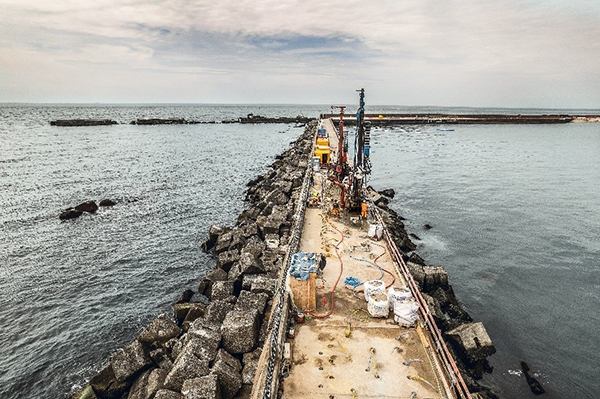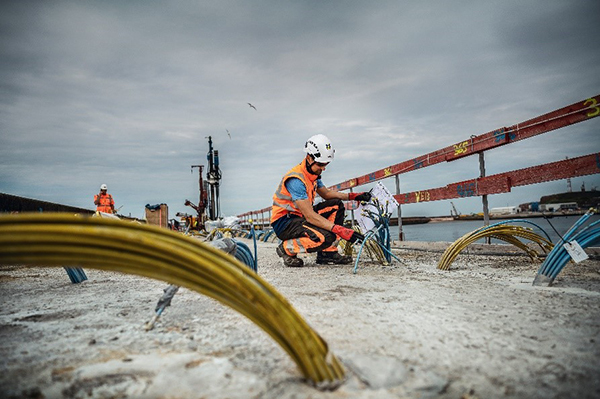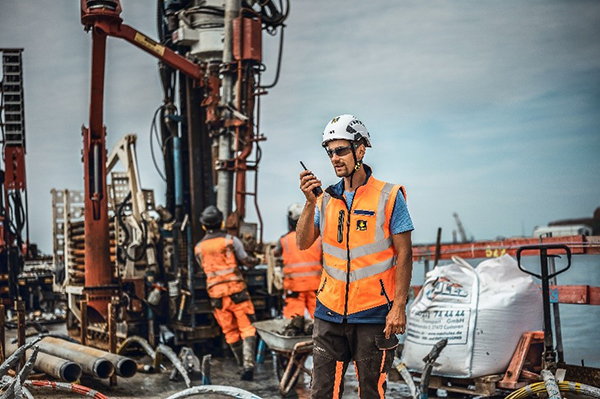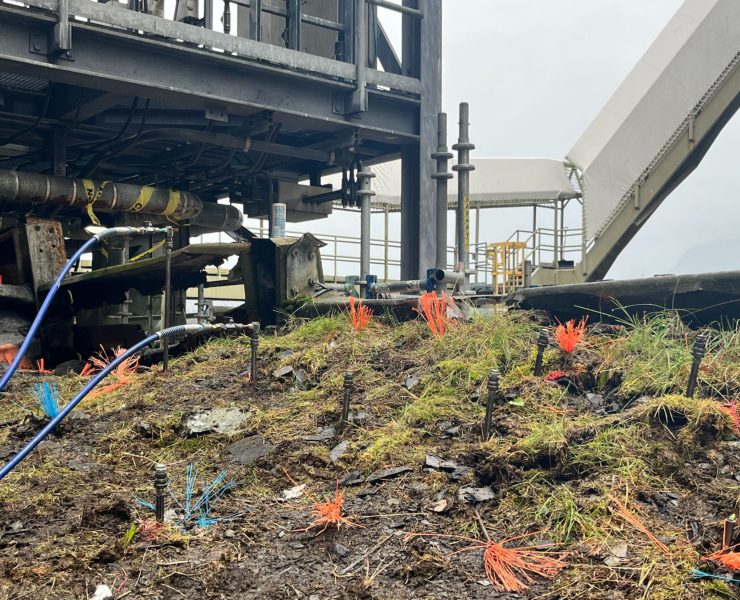Bauer Spezialtiefbau Carries Out Safeguarding Measures on the Harbor Breakwater on The Island of Helgoland


Helgoland, Germany – Situated in the middle of the North Sea roughly 50 km away from the mainland, Germany’s only island in the open sea is a place of pristine charm with a unique natural landscape. Long popular as a tourist destination, the island has a magical appeal for its visitors, many of whom reach the island by ship and disembark from the harbor in southern Helgoland. To continue providing these routes in the future, safeguarding measures are being carried out on the southern breakwater of the harbor over a length of roughly 70 m. The area of the breakwater under construction was destroyed in two sections during a storm surge in December 1954 and then reconstructed using wooden caissons that were filled with demolished concrete and debris. To safeguard these areas, the Wasserstraßen- und Schifffahrtsamt Elbe-Nordsee (Elbe and North Sea Waterways and Shipping Authority) tasked BAUER Spezialtiefbau GmbH together with BTR Bohrtechnik Roßwag GmbH & Co. KG to carry out injection work in a total of four phases. The goal of the work is to close up cavities beneath the breakwater cover and to establish a connection with the fill material from the 1950s in order to stabilize them and restore the structural stability of the southern breakwater.

In first step, the contact joints between the breakwater cover and the stone ballast beneath it were filled with grout injections over the entire width of the breakwater. One particular challenge here was the follow-up injection work on the sea side: Under full stress due to weather factors, breaking waves, and tides, an injection grout curtain was executed with rapidly binding polyurethane resins for temporary shielding of the subsequent work phases. Because these resins require water in order to react, the injection sequence was dependent on the tide level and required precise planning.

The preparatory measures in phase 2 made it possible to ultimately complete the additional work with less influence from breaking waves and tides. The injection curtain on the harbor side was executed in a comparable manner to the work on the sea side, but using a combined bentonite-polyurethane mixture as the injection agent. This resulted in longer binding times compared with pure polyurethane resin injection. To protect the previously executed injection curtain from phases 2 and 3, a solid injection with a cement slurry was executed in the last step to completely fill the cavities in the breakwater and thus fully restore its structural stability.
“The work on the first section has already been concluded. In the second section, the bentonite injections for phase 4 are currently being constructed,” explains Jonathan Rehor, site manager of BAUER Spezialtiefbau GmbH. “The work began in April 2022 and will be completed on schedule in October.”

Apart from the difficult working conditions in the “open sea,” the exposed location of the work front is also a unique factor and a challenge: “Both the material coordination for transport to the island and the logistics on the island itself were extremely labor-intensive,” continues Jonathan Rehor. “In addition, all the material must be carried from the storage area on the island using wheel loaders over the narrow breakwater to the work front roughly 600 m away. The total distance traveled works out to 1,800 km.” In addition, it is not typical for a total of four different types of injection to be executed on one site: “A thoroughly unique project surrounded by one-of-a-kind scenery.”

















